The Intransience of Azure: Ri by Achal Mishra
Blue falls in different ways. It settles on the skin, on leaves, rivers, and dust, on winding roads amid the large silhouettes of mountains. It settles, but it does not linger for long, glimmering in slow farewell with an oneiric haze. A similar mistiness etched across its breadth, Ri (2023) is Achal Mishra’s third film, shot over June and July 2023 with a 95-minute runtime that offers a close, gentle reading of the landscape of Ladakh, chronicled through the eyes of a traveller. The film recently had its world premiere at the 12th Dharamshala International Film Festival. Opening with a tranquil image of clouds contorting above a mountain—shifts in shape and hue made visible by imperceptibly changing light, a brief glimmer of yellow in a lake of blue—Ri occupies a different narrative quality from Mishra’s previous works while retaining the familiar frame of his experiments with the sheer beauty of an image. As a viewer, one is invited to pause before the richness of his use of tonality and textures. Working as the editor, producer, cinematographer and director, Mishra conveys with immense tenderness the joy that brims over in acts of listening carefully.
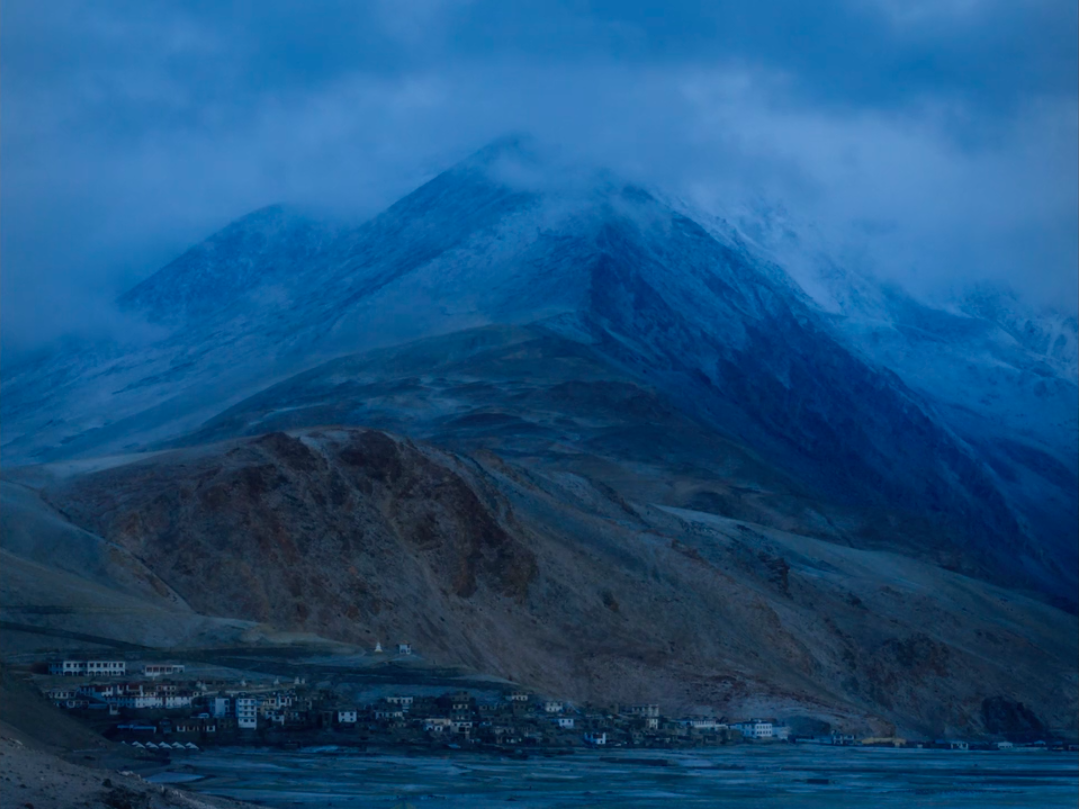
Mishra takes us through Ladakh at its magical blue hour, captured at twilight at the break or close of the day, with glimpses into daily life—conversations held in passing, an infinite wilderness, the starkness of journeys, both long and short. Brought together with the exceptional talents of Tajdar Junaid’s music, Rohan Deep Saxena’s sound recordings and Abhinandan Sharma’s cinematography, the film unfolds through the eyes of a visitor. This intentionality situates the film’s perspective. It directs one to think of how we observe, how we listen to what we may not understand, and how we grasp at newness and difference, all the while contemplating the allure of each such encounter. As an observer, Mishra chooses to compose distance meditatively. In some moments, the landscape is captured through the frame of a car door, ajar—a poetic framing of movement that contains a sense of destination and of accompanying contemplation, watching, and remembering.
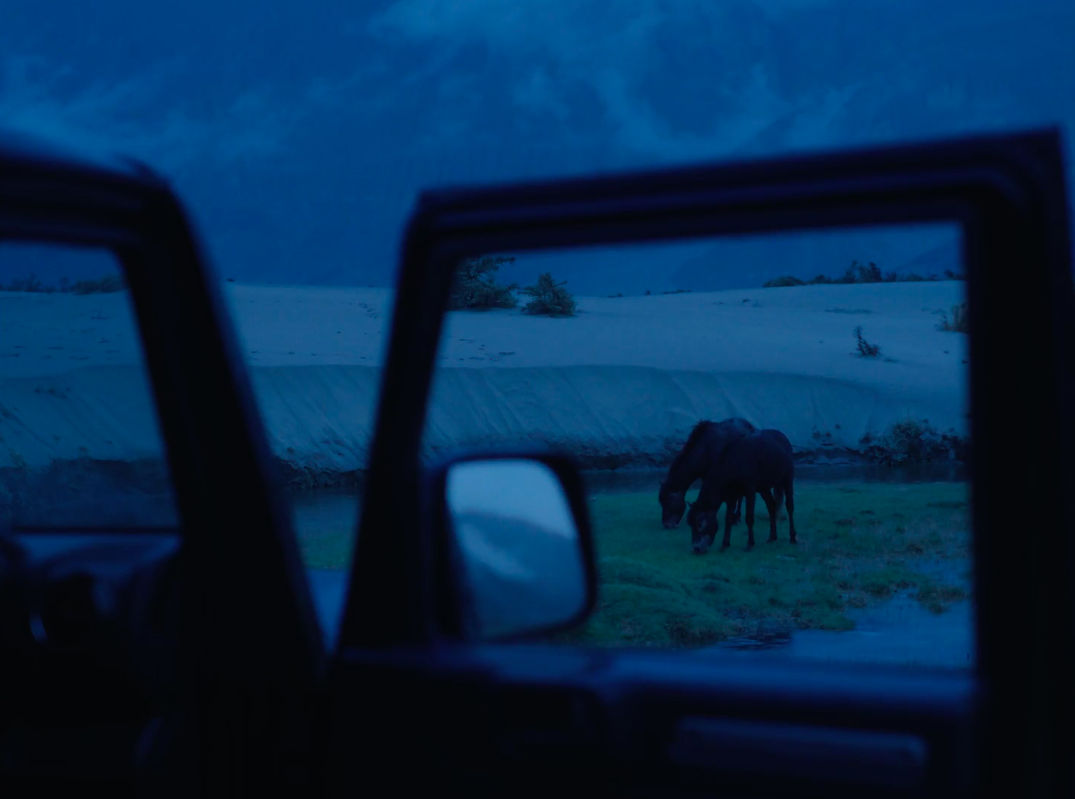
Held up by vignettes amalgamated by Mishra, the film exemplifies listening most attentively to conversation. The earliest snippet that we are privy to is a scene from a kitchen that is well-stocked and visibly warm. A family bonds over a meal as vegetables are chopped and stirred into a pot. The conversation turns to whether one of the children has ever seen a wolf. When the child admits that he has not, his relative gently chastises him. Seeing a wolf appears to be mandatory, almost central to one’s experience of life. Extending this conversation, the relative states that if he were to take the sheep out, the wolves would come. Subtle in its placement, this echoes a sense of inevitability—a treatment of temporality that exists across Mishra’s filmography. As the late Louise Glück wrote in her poem Matins, “…was the point always to continue without a sign?”
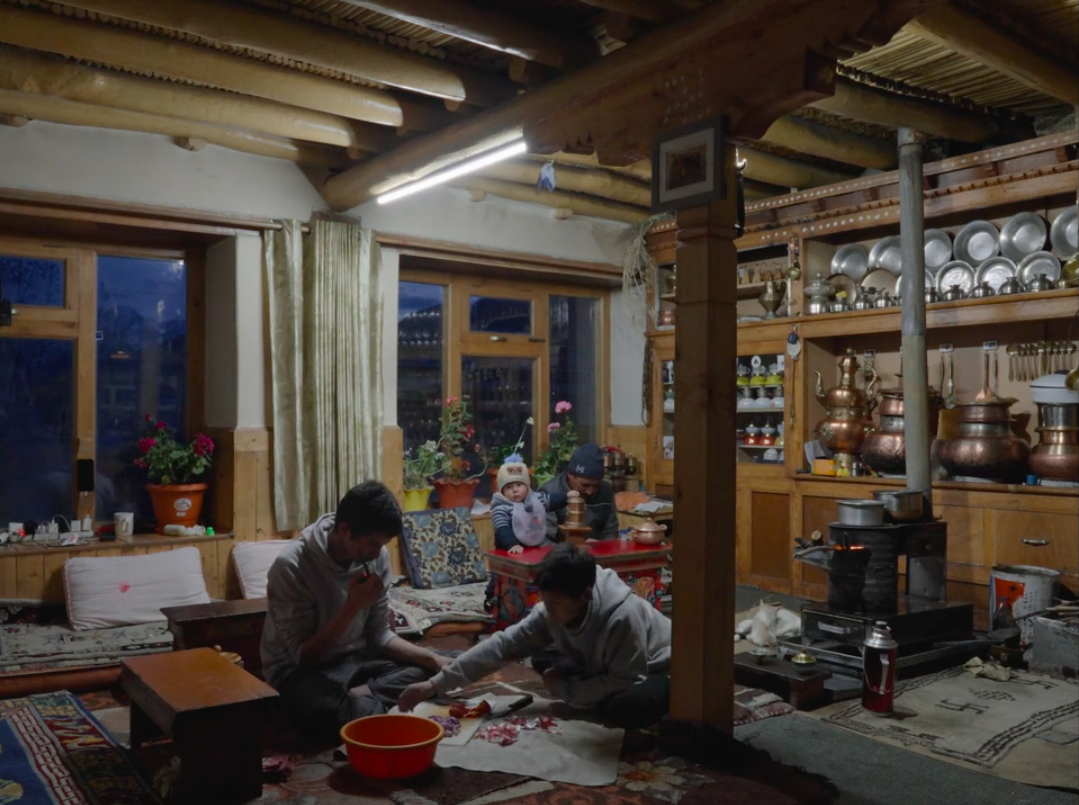
In a series of slow panning shots across the film, Mishra documents the sweep of Ladakh, the built and human-made contrasted between overlays with the vastness of highland pastures. Ecologies and ecosystems mix and canter. We see a herd pass through grazing land, led by a shepherd. The vision of the huddle being tended to on the mountainside presents a panorama of care and coevality. It is followed, almost immediately, with the footage of a wolf—a contribution by friend and photographer Morup Namgail—harking back to the conversation in the kitchen. Polarities and coexistences, conjured in that moment, become cinematic annotations of the way cyclicality—of life, death and the mundane—can be referenced.
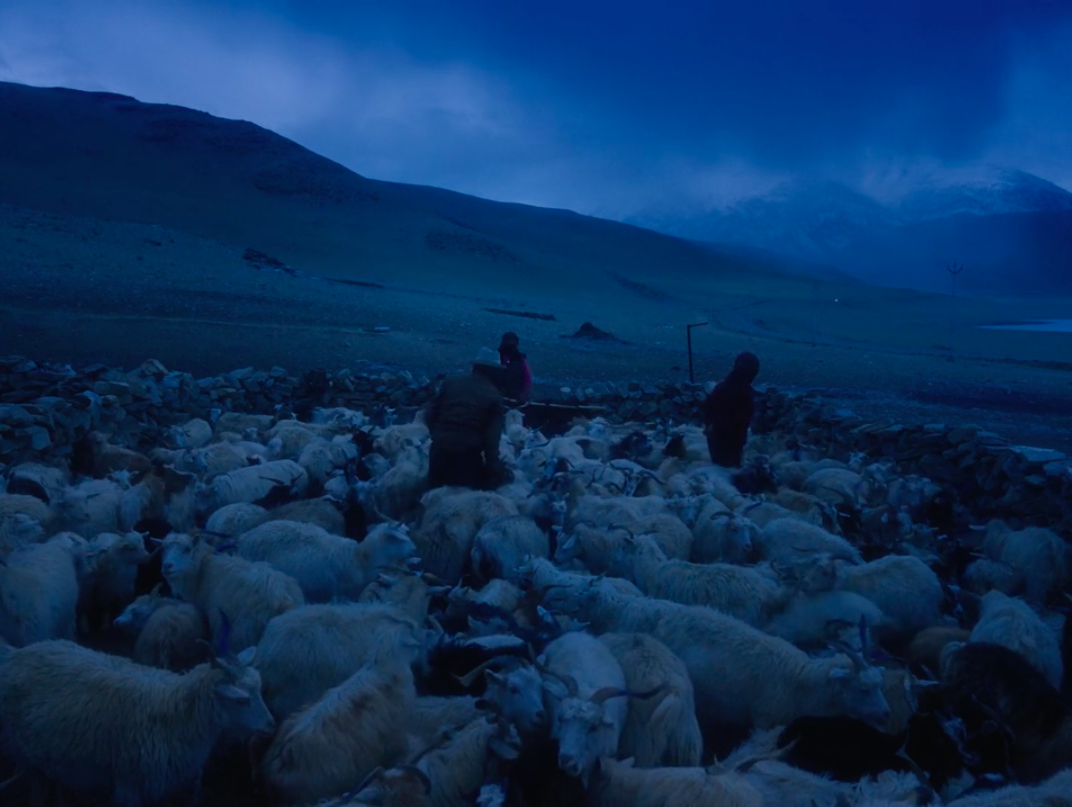
In a scene from the film, we witness a conversation between a man and a woman, perched on a wall, arguing amicably about the most apt name for the colour of a mountain in Ladakhi. Is it mukpo (maroon) or something more specific? Is it instead a range, a spectrum of colour that encompasses different associations? One is also able to catch brief insertions of Hindi, English, Kannada and German across segments in the film. In a subsequent scene, a woman paints the mountainous scenery before her on a canvas. A blinking red light, mildly disruptive in its intention, is a blur in the background, much like the undulations that surround it. As darkness fades to blue, she continues to paint, and in this imaging of the mountain—its hues, shadows and inclinations—emerges an act of cartography itself. What unravels across these segments is the spool of specificity that we hold onto, and its subjective entanglements that tug at how we locate ourselves within meaning, within language and without. The fallibility of language and translation is addressed in the way we seek to navigate that which we cannot define and how we can counter the firmness of words with the fluidity of sentiment and transience.
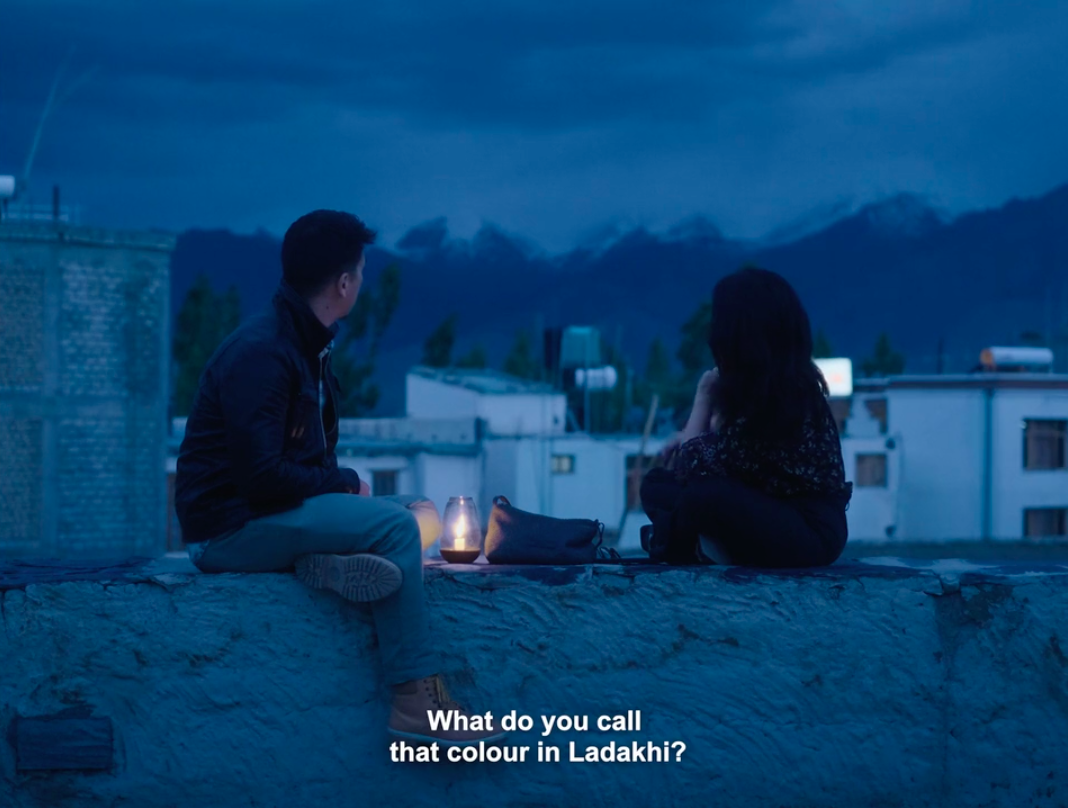
A testament to Mishra’s photographic imagination, Ri is a serenade, an open letter, a line drawing that offers itself up to be read and taken forward vividly and freely. The photographic is untroubled here, it pulls you in with its sedate stature. Within the stillness of certain frames, the horizon evaporates—a quality reminiscent of Hiroshi Sugimoto’s Seascapes—giving in to the timelessness of Ladakh and to Mishra’s image-making. The film renders palpable intimacy and silence; Mishra does not hold back, throwing himself into harmonising with the liminal, evoked in and as awe-inspiring, exalted beauty. Ri cascades much like the mountain façades it pays tribute to; it diffuses as a fond scent, as memories ever so carefully collected, as treasure held close but gently bestowed.
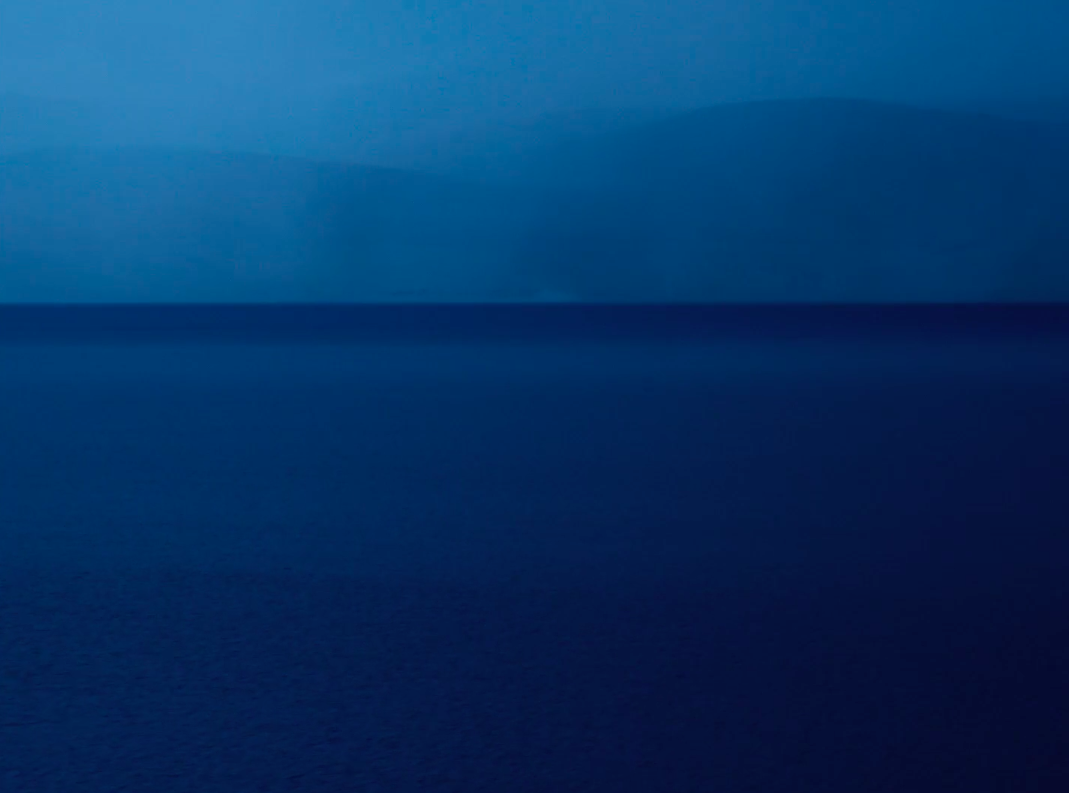
To read about other films that screened at the Dharamshala International Film Festival, read Mallika Visvanathan’s piece on Asmae El Moudir’s The Mother of All Lies (2023), Santasil Mallik’s essay on Sreemoyee Singh’s And, Towards Happy Alleys (2023) and Annalisa Mansukani’s review of Clara Kroft Isono’s Bawa’s Garden (2022).
To learn more about Achal Mishra’s films, revisit Annalisa Mansukhani’s reflections on Gamak Ghar (2019) and Dhuin (2022).
All images from Ri (2023) by Achal Mishra. Images courtesy of the director and the Dharamshala International Film Festival.




